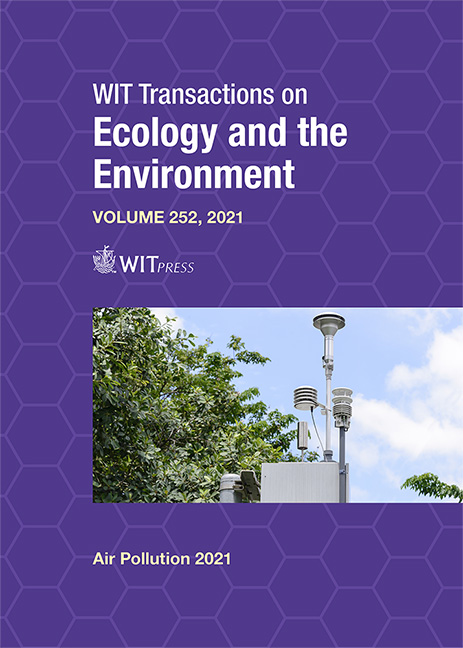RELATIONSHIP BETWEEN POLLUTION LEVELS AND SOCIOECONOMIC VARIABLES: CONDITIONS IN NINE REGIONAL MUNICIPALITIES IN VALPARAÍSO, CHILE
Price
Free (open access)
Transaction
Volume
252
Pages
8
Page Range
231 - 238
Published
2021
Paper DOI
10.2495/AIR210211
Copyright
Author(s)
PATRICIO HERRERA, JOSE ROJO, VALERIA SCAPINI
Abstract
Air pollution, which generates negative effects on people’s health, is linked to 23% of deaths worldwide. Among the main air pollutants are particulate matter (PM10 and PM2.5), which causes cardiovascular and respiratory diseases, affecting the whole community living in a sector exposed to emissions; and sulphur dioxide (SO2), which can cause severe effects even with short exposures. Based on air pollution data obtained from National Air Quality Information System (SINCA) monitoring stations, meteorological information from the Meteorological Directorate of Chile, and socioeconomic information on income poverty level, multidimensional poverty level, unemployment, schooling, overcrowding and health, we constructed a data panel containing daily information at the community level, from 2016 to 2019. Using three ordinary least squares (OLS) regression models, we studied the relationship between socioeconomic variables and each of the pollutants. Our results show that, in general, there is a positive and significant relationship between the level of multidimensional poverty of a population and the totality of regional pollution levels; as well as a negative and significant relationship between unemployment and the different pollution levels. Finally, there is a negative and significant relationship between the level of citizen’s education and pollution. The main objective of this study was to investigate the possible relationships between socio-economic variables and pollution, in order to generate evidence to aid implementation of environmental public policies.
Keywords
air pollution, particulate matter, sulphur dioxide, socioeconomic variables, poverty level, health risk, environmental monitoring





